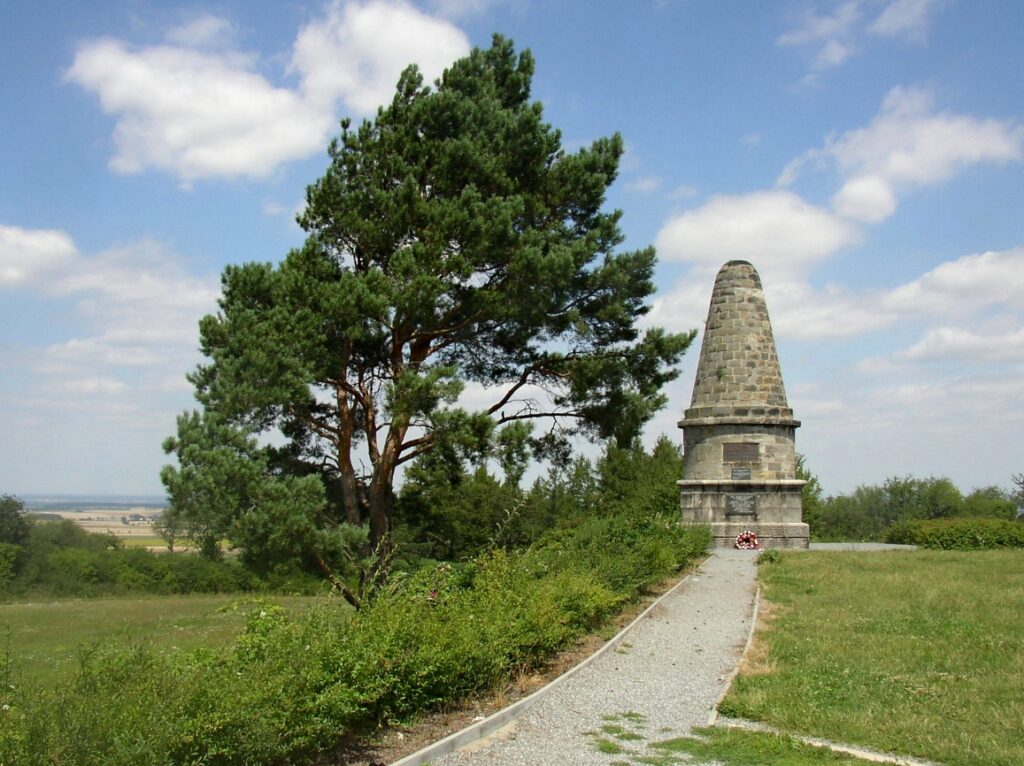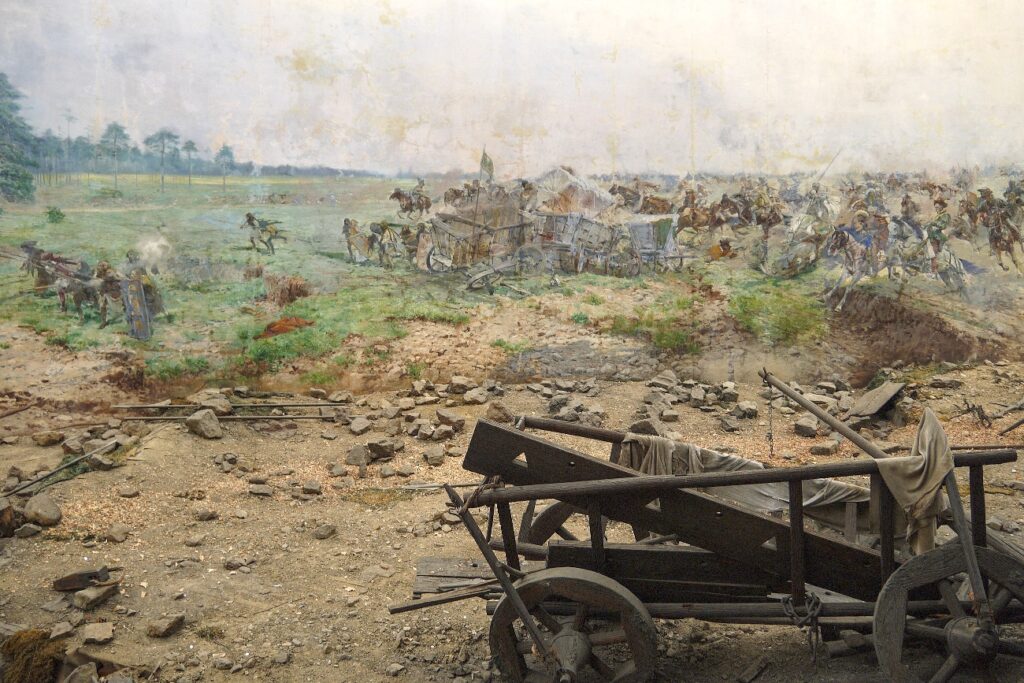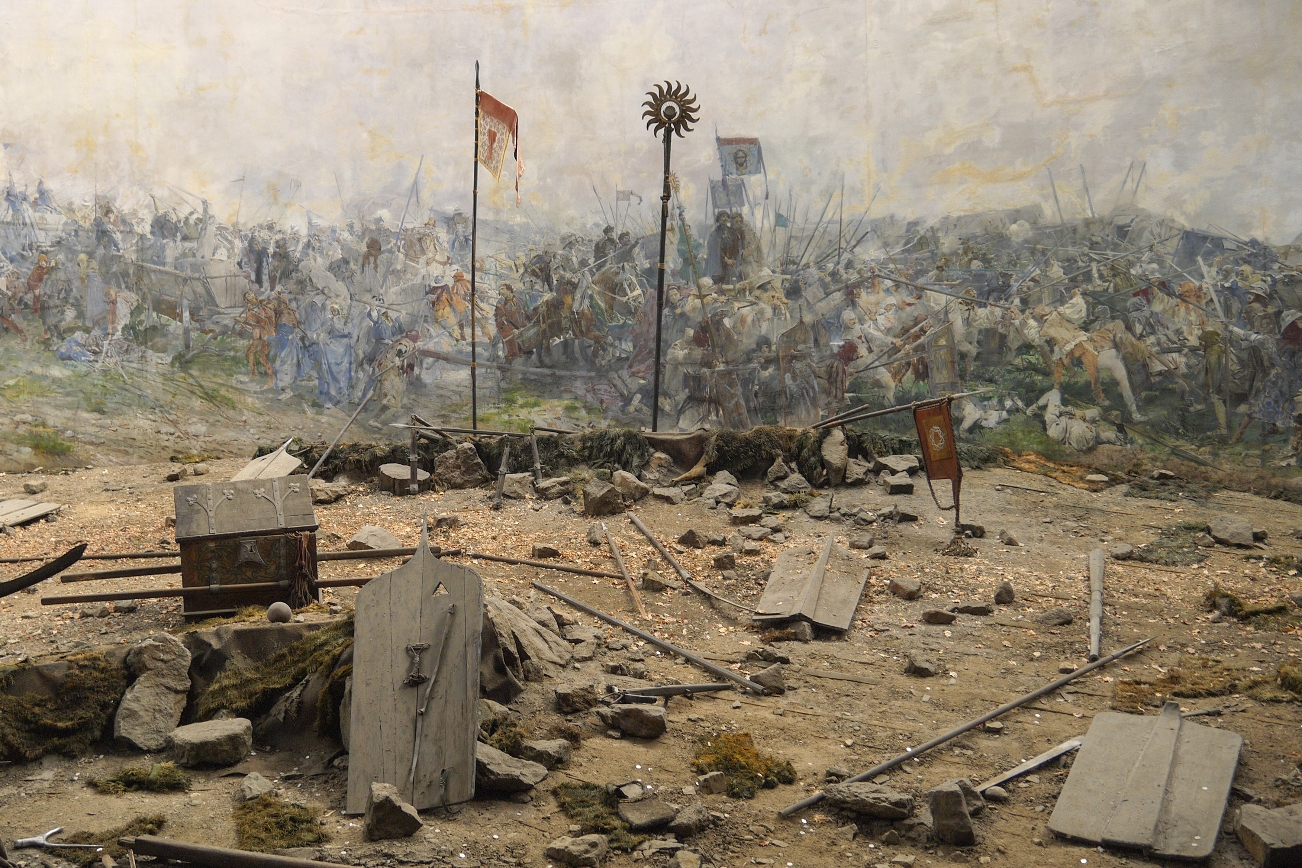The Battle of Lipany and its myth – Lipanská mohyla, Lipany
Fact of the Czech figure „The myth of White Mountain defeat”
Part of the „The myth of national disaster” topic
On May 30, 1434, nearby the village of Lipany, opposing factions of the Hussite religious wars, which had been raging in Bohemia since 1419, fought a battle. The forces of the moderate Hussite nobility and Catholics crushed the feared field armies of the radical wing of the Hussite movement. Among the fallen in the Battle of Lipany was the priest and military leader Prokop the Bald, the most notable figure of the rebellious Czechs after the death of the illustrious commander Jan Žižka. The defeat of the radicals paved the way for an agreement with the monarch and the establishment of lasting peace in the country and enabled a theological compromise between the Hussites and the Catholic Church.
In the 19th century, when the foundations of modern Czech collective memory were being formed, Czech historians regarded the Hussite movement as the pinnacle of national history. According to František Palacký, the defeat of the radical–popular wing of the Hussites allegedly halted the development of democratic forces in Czech society for centuries. The event was perceived as a tragic symbol of national discord, a catastrophe comparable to the Battle of White Mountain. The supposed tragedy stimulated the imagination of artists and was commemorated through numerous paintings, sculptures, and monuments. This gave rise to the largest painting in the Czech Republic, an 11-meter-high and 95-meter-wide panoramic depiction of the Battle of Lipany completed in 1898 by Luděk Marold.







